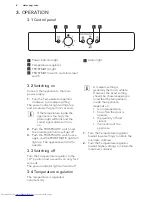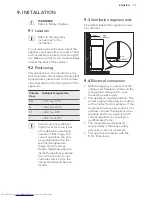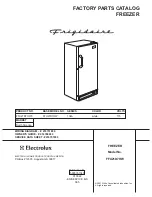
7.3
Defrosting the freezer
CAUTION!
Never use sharp metal tools
to scrape off frost from the
evaporator as you could
damage it. Do not use a
mechanical device or any
artificial means to speed up
the thawing process other
than those recommended by
the manufacturer. A
temperature rise of the
frozen food packs, during
defrosting, may shorten their
safe storage life.
About 12 hours prior to
defrosting, set a lower
temperature, in order to
build up sufficient chill
reserve for the interruption
in operation.
A certain amount of frost will always form
on the freezer shelves and around the
top compartment.
Defrost the freezer when the frost layer
reaches a thickness of about 3-5 mm.
1.
Switch off the appliance, or pull out
electrical plug from the wall socket.
2.
Remove any stored food, wrap it in
several layers of newspaper and put
it in a cool place.
WARNING!
Do not touch frozen
goods with wet hands.
Hands can freeze to the
goods.
3.
Leave the door open and insert the
plastic scraper in the appropriate
seating at the bottom centre, placing
a basin underneath to collect the
defrost water.
In order to speed up the defrosting
process, place a pot of warm water in
the freezer compartment. In addition,
remove pieces of ice that break away
before defrosting is complete.
4.
When defrosting is completed, dry
the interior thoroughly and keep the
scraper for future use.
5.
Switch on the appliance.
After three hours reload the previously
removed food into the freezer
compartment.
7.4
Periods of non-operation
When the appliance is not in use for long
periods, take the following precautions:
1.
Disconnect the appliance from
electricity supply.
2.
Remove all food.
3.
Defrost (if necessary) and clean the
appliance and all accessories.
4.
Leave the door/doors open to
prevent unpleasant smells.
WARNING!
If the cabinet will be kept on,
ask somebody to check it
once in a while to prevent
the food inside from spoiling
in case of a power failure.
8.
TROUBLESHOOTING
WARNING!
Refer to Safety chapters.
www.aeg.com
10











































